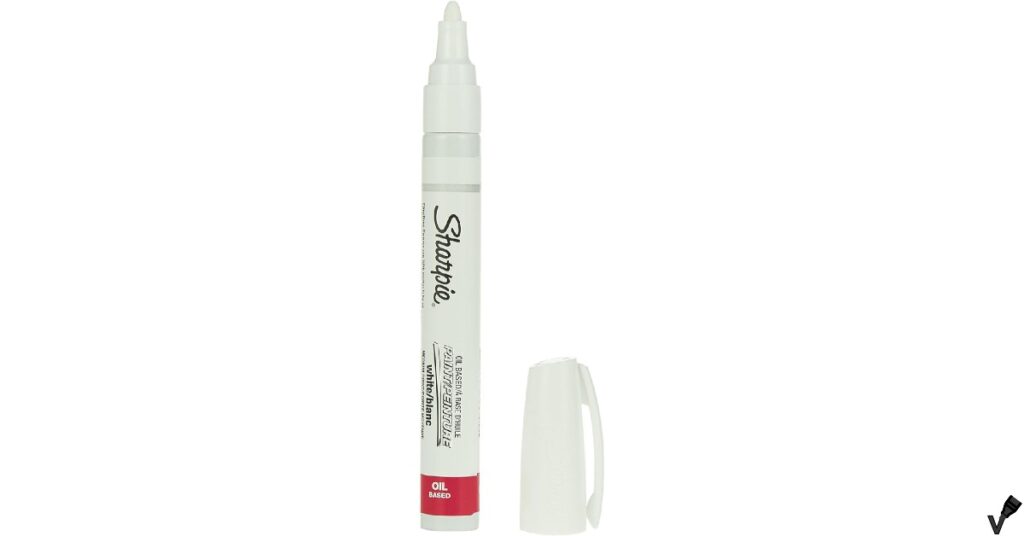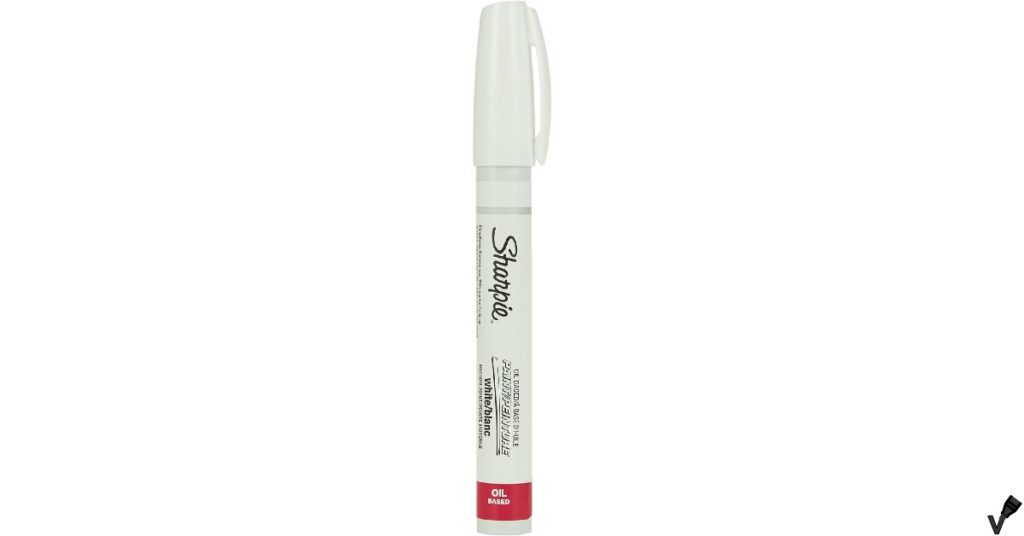My kids and I recently completed a school craft project that required the use of several supplies and markers. For that project, Sharpie Oil-Based Paint Markers have shown to be a noteworthy selection among the many possibilities accessible. Having used these markers firsthand, especially the medium point model with white ink, I have been able to recognize both their advantages and disadvantages. Here, I provide my observations based on my own use as well as a thorough examination of user and kid input.
Product Overview
Sharpie Oil-Based Paint Markers promise rich color and durability for a range of applications. When marking on dark surfaces, the medium point version with white ink is particularly helpful since it makes a noticeable impression. These are some salient characteristics:
- Medium Point: Ideal for both fine lines and broader strokes.
- White Ink: Offers high contrast on dark surfaces.
- Oil-Based: Ensures long-lasting marks on a wide range of surfaces.
- Versatile Usage: Suitable for metal, glass, plastic, and more.

Product Specs
| Brand | SHARPIE |
| Material Type | Oil |
| Number of Items | 1 |
| Size | 1 count (Pack of 1) |
| Point Type | Medium |
| Ink Color | White |
My Personal Experience
Pros
- Vibrant and Opaque
- Durability
- Easy to Use
Cons
- Ink Flow Consistency
- Tip Durability
- Ink Depletion
Pros
These markers are exceptional in a few crucial areas, as I have experienced from my own usage and by going through some of the reviews of other users:
- Vibrant and Opaque: Because of its remarkable color and opaqueness, the white ink is a great choice for labeling or adorning dark surfaces. In my workshop, I found it very helpful for adding personalization to metal containers because the ink stuck strongly and stood out..
- Durability: The long-lasting markings are guaranteed by the oil-based ink. These markers have not faded or washed off on any of the different surfaces I have used them on, including plastic and glass.
- Easy to Use: Even though it takes some priming at first, the ink flows smoothly and consistently to produce a line. For intricate work, the marker’s precise precision and comfortable grip make it an indispensable tool.Despite some initial priming required, once the ink starts flowing, it delivers a smooth and consistent line. The marker is comfortable to hold and allows for precise control, which is essential for detailed work.
Cons
However, there are some drawbacks noted by users, which I’ve also observed to an extent:
- Ink Flow Consistency: It has been observed by some users—including the kids and me—that the ink flow is not always uniform and that repeated priming is necessary to keep the line straight. When working on larger projects or not using the marker frequently, this might be very difficult.
- Tip Durability: Despite the versatility of the medium point, there have been reports—including mine—that after moderate use, the tip wears down or becomes “smushed.” This can make your markings less accurate and force you to replace them earlier than you would have liked.
- Ink Depletion: Many users have reported that the marker runs out of ink rather rapidly, especially when covering large areas. I have also noticed this, particularly when using the marker to fill in more substantial areas.

In-depth Analysis
I suppose examining the Sharpie Oil-Based Paint Marker’s design and real-world application results is crucial to understanding how well it works. So I tried to focus in this in-depth analysis on important factors that affect user happiness and overall efficiency in order to provide a thorough knowledge of how these markers perform in real-world usage.
Design and Build Quality
User ease is the primary consideration in the intelligent design of the Sharpie Oil-Based Paint Marker. Because to its sturdy design, the marker will not significantly deteriorate after frequent usage. Despite its versatility, the medium tip has proved controversial. Despite being advertised as being appropriate for both broad and fine strokes, the tip’s resistance to frequent or forceful use is actually a little bit weak. The difficulties users have reported can be attributed to the tip’s resilience, which has a direct bearing on both its longevity and the consistency of ink flow.
Ink Quality and Performance
I find that one of these markers’ best features is without a doubt the white ink that it uses. Its unparalleled brightness and opacity on dark surfaces produce a crisp, colorful result that is difficult to duplicate with other markers. The oil-based recipe improves the ink’s resilience to fading and water, which is especially useful for applications that are handled frequently or exposed to the environment.
However, the ink’s performance is not without its flaws. The consistency of ink flow has been a recurring issue, with some users finding the need to prime the marker repeatedly during use to achieve a steady stream of ink. This inconsistency can be frustrating, especially when working on detailed projects that require precision and uniformity.
Practical Usage and Versatility
For me and without doubt, I think the Sharpie Oil-Based Paint Marker shines in its versatility, capable of marking on a wide array of surfaces including metal, glass, plastic, and more. This makes it an invaluable tool for various projects, from DIY crafts to professional applications. Its performance on non-porous surfaces, where other markers might falter, is particularly commendable.
However, the aforementioned problems with ink flow and tip durability limit the marker’s usefulness. I, for one, think that these difficulties might only be a small annoyance for quick, precise activities. They do, however, become major disadvantages for projects requiring sustained use or extensive coverage. Furthermore, the marker’s rapid ink depletion severely restricts its usefulness for larger projects, requiring frequent, inconvenient, and expensive replacements.
Notes and Rating
- Quality 9/10: The Sharpie Oil-Based Paint Marker delivers high-quality, opaque, and glossy marks on a variety of surfaces. The ink is permanent and offers resistance to water, fading, and abrasion, ensuring long-lasting results.
- Value for Money 8/10: Considering its versatility, permanence, and the quality of the marks it produces, this marker offers excellent value for its price point.
- Ease of Use 7/10: The marker is easy to use, with a valve-action design that ensures smooth application. However, getting the paint flowing initially may require some effort.
- Versatility 9/10: This marker’s ability to write on virtually any surface, including metal, pottery, wood, rubber, glass, plastic, and stone, makes it highly versatile for a wide range of projects.
- Durability of Ink 9/10: The ink’s resistance to water, fading, and abrasion makes it highly durable, especially for projects exposed to the elements or handling.
Final Thoughts
In my humble opinion, the Sharpie Oil-Based Paint Markers are a useful tool for a variety of projects because they combine brilliant color, robustness, and ease of use. However, I want to point to the concerns about ink flow and tip durability, which should be known by prospective users as they may impact the user experience as a whole. My own experience supports the general opinion from evaluations, both favorable and negative, emphasizing the markers’ advantages in terms of visibility and robustness but also pointing out their shortcomings in terms of consistency and lifespan. They can be a great option for people who are thinking about using these markers occasionally or for particular purposes where the advantages outweigh the disadvantages.
FAQs
-
What surfaces can the Sharpie Oil-Based Paint Marker be used on?
The Sharpie Oil-Based Paint Marker can be used on a wide variety of surfaces including metal, pottery, wood, rubber, glass, plastic, and stone, making it a versatile tool for various projects. -
Is the ink from the Sharpie Oil-Based Paint Marker permanent?
Yes, the ink from the Sharpie Oil-Based Paint Marker is permanent, offering resistance to water, fading, and abrasion for a lasting impression on most surfaces. -
How do I start the ink flow in a Sharpie Oil-Based Paint Marker?
To start the ink flow, shake the marker with the cap on. Then remove the cap, press the tip down on a test surface a few times until the ink begins to flow. Always recap the marker tightly after use. -
Are Sharpie Oil-Based Paint Markers safe for children to use?
Yes, Sharpie Oil-Based Paint Markers are safe for use by children and adults as they are AP-certified non-toxic. However, adult supervision is recommended for young children to ensure safe use. -
Can the Sharpie Oil-Based Paint Marker be used for outdoor projects?
Yes, due to its water-resistant, fade-resistant, and abrasion-resistant properties, the Sharpie Oil-Based Paint Marker is suitable for outdoor projects. However, for best longevity, it’s recommended to apply a clear sealant over the marker for protection against harsh outdoor elements.

